Category: — PAINTINGS, SCULPTURE & DRAWINGS
ARTISTS
George Grosz was a German artist known especially for his caricatural drawings and paintings of Berlin life in the 1920s. He was a prominent member of the Berlin Dada and New Objectivity group during the Weimar Republic.
His drawings and paintings from the Weimar era sharply criticise what Grosz viewed as the decay of German society. He emigrated to the United States to teach art in 1933, and became a naturalised citizen in 1938. He thus avoided Nazi persecution when his work was deemed “degenerate.” His later style changed sharply due to his loss of faith in humanity, shifting from political propaganda to romantic landscapes and caricatures of the inhabitants of New York City. The traumatic WWI experiences that drove George Grosz to rally against war, corruption, and what he saw as an immoral society created a particularly affecting artistic legacy. As a symbol of the revolution in Germany, his art was instrumental in awakening the general public to the reality of government oppression. Grosz synthesised two distinct and long-standing traditions within German art history to create his unique style. Combining the linear quality of the historic graphic tradition with German Gothic art’s penchant for brutally grotesque imagery, Grosz utilised these traditional modes to add further emphasis to his contemporary moral perspective.
Grosz exhibited regularly and taught for many years at the Art Students League of New York. In 1956 he returned to Berlin where he died in 1959.
Exhibitions(Selection)
2019
“Menschenbilder – Ernst Barlach | Otto Dix | George Grosz | Samuel Jessurun de Mesquita – Arbeiten auf Papier”, Kunsthaus Kaufbeuren, Germany
2018
“George Grosz in Berlin” , Bröhan-Museum – Landesmuseum für Jugendstil, Art Deco und Funktionalismus, Berlin, Germany
2016
“Der große Zeitvertreib”, Museum Kunstpalast, Düsseldorf, Germany
2014
“Grosz. Krieg Grotesk – Zwischen Expressionismus und Neuer Sachlichkeit”,2011
“Deutschland ein Wintermärchen”, Max-Ernst-Museum, Brühl, Germany
2010
“George Grosz. Korrekt und anarchisch”, Akademie der Künste, Berlin, Germany
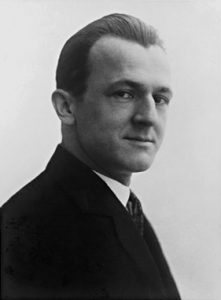
Jonas Wood (*1977)
Contemporary American artist Jonas Wood (*1977) works with painting,
drawing and printmaking. Wood’s brightly coloured compositions often
consist of detailed still life and domestic scenes. His paintings are
influenced by his experimentation and work in other media –
particularly collage – and he skillfully layers flat forms to create a
sense of depth and perspective in his images.
The artist draws on art historical references as well as on the
interior settings, objects and people in his daily life. He was born
in Boston, and was deeply influenced by the art that surrounded him
during his childhood, as his grandfather possessed a significant
collection of works by artists such as Francis Bacon, Alexander Calder
and Andy Warhol.
After receiving a Bachelor’s degree in psychology and art from Hobart
and William Smith Colleges, Wood received an MFA in painting and
drawing from the University of Washington, Seattle.
Jonas Wood’s work has been exhibited internationally and can be found
in the collections of the Hammer Museum, the Museum of Contemporary
Art Chicago, the Museum of Modern Art, and the Whitney Museum of
American Art, among other notable institutions. The artist lives and
works in Los Angeles, where he shares a studio with his wife, artist
and ceramicist Shio Kusaka.
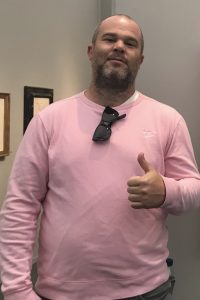
Karl-Heinz Schwind(*1958 in Landau)
From the catalogue of the first exhibition by Daniel Blau, Munich 1990: “Images enlarge the space, expand it – form tunnels into other worlds, make the room a Charles de Gaulle departure hall”
Karl-Heinz Schwind studied under Georg Baselitz from 1978-84 and was a master student of Per Kirkeby at the Karlsruhe Art Academy from 1984-85.
His colourful, strong works, some of which border on material battles, contain numerous quotes from art history.
Schwind tries it out – that’s his style. His works show the political and cultural tensions of West Germany in the 80s.
To question himself and society – this is what Schwind has been working on in his painting to this day. He is not afraid of references, thematically he incorporates Ludwig Kirchner into his works, just as quotes of Dadaism and technical transformation of Tachism.
He follows an inspiration almost archaically, anarchically and creates work out of what falls into his hands: wood, magazines, wax crayons, canvas, yarn.
Schwind lives and works in Berlin.

Billy Al Bengston (*1934 in Dodge City, Kansas)
is an American artist and sculptor. Bengston’s fondness for motorcycles influences his artworks, which often consist of vibrant lacquer on metal.
He also works on paper and canvas. Besides motorcycle culture, surfing and his life in California and Hawaii give the artist’s works their character.
In 1955 he went to California College of Arts in Oakland followed by studies at Otis Art Institute in LA. Since 1958 there have been various solo exhibitions in LA with Ferus Gallery. His first solo museum exhibition was in 1968 at LACMA. The 1960s were shaped by professional motorcycle racing. In 1974 he visited Hawaii for the first time.
Bengston surfs and paints in Venice Beach and Honolulu.
Exhibitions and Distinctions (Selection)
2018
“Endless Summer”, Museum of Contemporary Art Chicago, USA
2017
“California Dreaming: Ed Moses, Billy Al Bengston, Ed Ruscha”, New Britain Museum of American Art, USA
2016
“Still Life with Fish: Photography from the Collection”, Hammer Museum, Los Angeles, USA “Los Angeles, – a Fiction”, Astrup Fearnley Museet, Oslo, Norway
2015
“Drawing in L.A.: The 1960s and 70s”, Los Angeles County Museum of Art, USA
2014
“Selections from the Permanent Collection”, Museum of Contemporary Art, Los Angeles, USA
2013
“Craig Turned On The Light and California Art Bloomed”, Honolulu Museum of Art, Hawaii.
2012
“Sinister Pop”, Whitney Museum of American Art, New York, USA

Sigmar Polke was an influential German artist known for his distinctive paintings and photographs. He often worked with non-traditional artistic materials and experimented with a wide variety of styles and subjects. He was born in Poland during World War II. After the war, his family was expelled to East Germany where the artist spent his early years until his move to West Germany in 1953.
Polke studied at the Kunstakademie Düsseldorf where he co-founded the movement now known as Capitalist Realism with fellow artists Gerhard Richter and Konrad Lueg. The artists depicted and critiqued the growing consumerism of West Germany, drawing on Pop Art and media influences. The group organised the notable 1963 art exhibition Demonstration for Capitalist Realism.
By the end of the 1960s, Polke had solo exhibitions at numerous galleries including Galerie René Block, Berlin; Galerie Schmela, Düsseldorf; Galerie Heiner Friedrich, Munich; and Galerie Rudolf Zwirner, Cologne.
He participated in numerous international biennales and exhibitions including Documenta, the Bienal de São Paulo, and the Venice Biennale, and received a number of awards, including the Golden Lion for his solo presentation at the West German Pavilion in 1986 at the Venice Biennale.
Polke worked predominantly with photography in the 1970s and returned to working with paint in the 1980s, making abstract works that drew on chance reactions between materials. In the last two decades of his life, he produced paintings focused on historical events. He died on June 10, 2010 in Cologne, Germany at the age of 69.
His works are held in the permanent collections of major international museums including the Art Institute of Chicago; The Broad, Los Angeles; Centre Georges Pompidou – Musée National d‘Art Moderne, Paris; Guggenheim Museum Bilbao; Hirshhorn Museum and Sculpture Garden, Smithsonian Institution, Washington, DC; The J. Paul Getty Museum, Los Angeles; The Metropolitan Museum of Art, New York; Museum für Moderne Kunst, Frankfurt; The Museum of Modern Art, New York; National Gallery of Art, Washington, DC; National Museum of Art, Osaka, Japan; Stedelijk Museum Amsterdam; and Tate Modern, London, among others.
Selected Exhibitions
2022
Sigmar Polke. Dualismen, March 5, 2022 – June 12, 2022, Städtische Galerie Karlsruhe, Karlsruhe, Germany
2021
Sigmar Polke – Produktive Bildstörung, Nov 13, 2021 – March 6, 2022, Kunsthalle Düsseldorf, Düsseldorf, Germany
2017
Sigmar Polke – Alchemie und Arabeske, Feb 11 – May 21, Museum Frieder Burda, Baden-Baden
2016
Sigmar Polke. Early Prints, Mar 20 – May 22, Städel Museum, Frankfurt am Main, Germany
2015
Alibis: Sigmar Polke, 1963–2010, Oct 09, 2014 – Feb 08, 2015, Tate Modern, London, UK
2014
Alibis: Sigmar Polke, 1963–2010, Apr 19 – Aug 03, The Museum of Modern Art, New York, USA
2014
Sigmar Polke. La démultiplication de l’humour. Les éditions dans la collection Axel Ciesielski, les Abattoirs, Jan 31–May 04, Museum of Modern and Contemporary Art – FRAC Midi Pyrénées, Toulouse, France
2008
Sigmar Polke. Photographische Arbeiten aus der Sammlung Garnatz, May 15 – Aug 31, Die Photographische Sammlung/SK Stiftung Kultur, Cologne, Germany
2007
Sigmar Polke. Eine Retrospektive 1963–2005. Die Sammlungen: Frieder Burda, Josef Froehlich, Reiner Speck, Jun 22 – Oct 07, Museum Moderner Kunst Stiftung Ludwig Wien, Vienna, Austria
2005
Sigmar Polke. Alice in Wonderland, Oct 1- Oct 30, Ueno Royal Museum, Tokio, Japan
2003
Sigmar Polke. Recent Paintings and Drawings, 1998–2002, Nov 15, 2002 – Apr 06, 2003,
Dallas Museum of Art, Dallas, USA
2001
Sigmar Polke et la Révolution Française, June 29 – Sept 24, Musée de la Révolution Française, Vizille, France
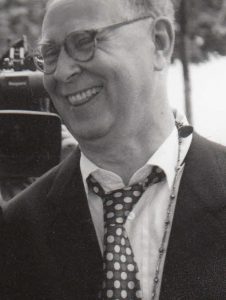
Christa Dichgans was born 1940 in Berlin. She studied from 1960-65 at the Berlin Academy of Arts under Fred Thieler and worked as Georg Baselitz’s assistant from 1984 to 1988. She lived and worked in Berlin and La Haute Carpénée in Southern France.
Exhibitions and Distinctions (Selection)
2019
Galerie Daniel Blau, Munich
2014
Galerie Daniel Blau, Munich
2010
Galerie Daniel Blau, Munich
2006
Galerie Contemporary Fine Arts, Berlin
1997
Galerie Daniel Blau, Munich
1996
Artist group “Die Ecke”, Augsburg
1995-2000
Journeys through Russia and Asia
1995
Museé d’Art Moderne, Nice
Goethe Institut, Moscow
1985
Mannheim Art Association. Municipal Gallery Viesen
1981
Göttingen Art Association
1978-1979
82 etchings for the book “was – wenn/ was nicht/ wenn nicht”, published and commentated by “Y” (A.R. Penck), Galerie Springer, Berlin
1977
Galerie Springer, Berlin
1975
Lerner-Heller Gallery, New York
1974
Galerie Marzona, Bielefeld
1972
Galerie Springer, Berlin
1971
Residence at Villa Romana, Florence
1966-1967
DAAD scholarship in New York
1964-1967
German National Scholarship
Literature (Selection)
Christa Dichgans – Spielzeugbilder, Galerie Daniel Blau, Munich 2010
Christa Dichgans – King Kong Kisses, Contemporary Fine Arts, Berlin 2006
Christa Dichgans – Werke 1969 – 1998, Bern Berlin 2000
Christa Dichgans – Retrospektive, Städtische Galerie Viersen 1995
Christa Dichgans – Werke 1964 – 1991, ed. by Haus am Waldsee, Berlin 1992
Christa Dichgans – Bilder 1967-1972, Galerie Springer, Berlin 1972
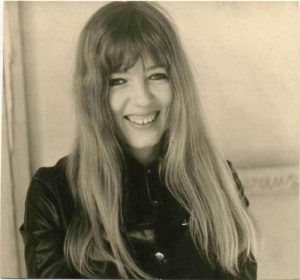
Eugène Leroy (1919-2000) was introduced to the Dutch Old Masters Rembrandt and Jordaens as a teenager, and later to El Greco and Goya. From 1931 to 1932 he studied at the École des Beaux‑Arts in Lille and Paris, but he quickly decided that the methods and approaches of the academies did not correspond with his understanding of art. He moved to Roubaix, where he worked as a Latin and Greek teacher. He consistently pursued his painting during this time. In 1936 he saw “The Jewish Bride” by Rembrandt in the Amsterdam Rijksmuseum and the abstraction of materiality and the flesh were to fascinate him throughout his life. He had his first exhibition in Lille in 1937. He continued to teach during World War II. His post-war works are characterized by dark colors and have a strong connection to the North Sea. This style of painting was thematically interrupted by a crucifixion scene that he created for a chapel in Roubaix in 1946-48. In 1954 he exhibited with Sam Francis, Serge Poliakoff and Marcel Pouget. His first solo exhibition took place at the Tourcoing Museum in Dunkirk in 1956. Leroy’s move to Wasquehal in 1958 is clearly evident in his œuvre, as there is a noticeable shift in his compositions towards more abstraction. From 1955-70 he exhibited in the May Salon in Paris. Numerous exhibitions followed, and the 1988 retrospective in the Musée d’Art Moderne de la Ville de Paris deserves special mention. In 1992 he took part in the documenta IX in Kassel and in 1995 in the Venice Biennale.
Leroy died 2000 in Wasquehal.
Exhibitions and Distinctions (Selection)
2022
Hall Art Fondation, Kunstmuseum Schloss Derneburg, Holle, Germany
2021
MUBA, Tourcoing, France
2009
Donation of 600 works to the Musée des Beaux-Arts de Tourcoing
2004
Musée d’Art et d’Industrie, La Piscine, Roubaix
2001
Musée d’Art Moderne, Villeneuve d’Ascq
2000
Art Association for Rhineland and Westphalia, Dusseldorf.
Albright-Knox Art Gallery, Buffalo (NY)
1997
Kunsthalle Basel
1996/97
Retrospective at Centre díArt Contemporain Bignan, Centre díArt Contemporain Rennes and Musée des Beaux-Arts de Rennes
1996
Grand Prix National de la Peinture
1995
45th Venice Biennale
1994
Galerie Daniel Blau, München
1993
Musée d’Art Moderne et d’Art Contemporain, Nice
1992
Documenta IX, Kassel
1991
Participation at 21st Sao Paolo Biennale
1987
Musée d’Art Moderne, Villeneuve d’Ascq
1988
Stedelijk Van Abbemuseum, Eindhoven
Musée d’Art Moderne de La Ville de Paris
1982
Museum van Hedendaagse Kunst, Gent
1977
Ecole des Beaux-Arts, Lille
1970
Wiener Sezession, Wien
1960-65
Collaboration with Claude Bernard Gallery, Paris
1957
Prix Emile-Othon Friesz
1956
Musée des Beaux-Arts, Tourcoing
Literature (Selection)
Eugène Leroy – Alles ist Farbe, ed. by Kunstverein für die Rheinlande und Westfalen, Dusseldorf, 2000
Bernard Marcadé, Eugène Leroy, Paris, 1999
Eugène Leroy – Peintures, ed. by Kunsthalle Basel, 1997
Hector Obalk, Eugène Leroy – Oil Paintings, Tokyo 1991
Eugène Leroy – Bilder und Zeichnungen, ed. by Galerie Daniel Blau, Munich, 1994
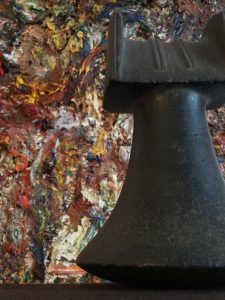
Chuck Close was born 1940 in Monroe,Washington. In 1962 he received his B.A. from the University of Washington, Seattle, and in 1964 his M.F.A from Yale University, New Haven. After a Fulbright grant in Vienna he worked as an art teacher at the University of Massachusetts. A spinal artery collapse in 1988 left Close almost completely paralyzed. He lives and works in New York.
Solo Exhibitions (Selection)
2010
Chuck Close: Portraits,Virginia Museum of Fine Arts, Richmond,Virginia
Chuck Close: Prints: Process and Collaboration, Scottsdale Museum of Contemporary Art, Scottsdale
2009/10
Familiar faces: Chuck Close in Ohio Collections, Akron Art Museum, Ohio.
Faces, Chuck Close and Contemporary Portraiture, Nevada Museum of Art, Nevada
2008
Chuck Close: Seven Portraits, The State Hermitage Museum,Winter Palace, St. Petersburg
2007
Chuck Close: Portaits 1996-2006, Ludwig Forum für Internationale Kunst, Aachen
2003/10
Chuck Close Prints: Process and Collaboration: Bluffer Gallery, University of Houston; travelled to: Metropolitan Museum of Art, New York; Knoxville Museum of Art; Modern Art Museum of Fort Worth,Texas; Boise Art Museum, Idaho; Portland Art Museum,Oregon; Sungkok Museum of Art, Seoul; San Jose Museum of Art, California; Scottsdale Museum of Contemporary Art,Arihona; Corcoran Gallery of Art,Washington
1998/99
Travelling exhibition:The Museum of Modern Art, New York; Museum of Contemporary Art, Chicago; Hirshhorn Museum and Sculpture Garden, Washington; Seattle Art Museum, Seattle; Hayward Gallery, London
1997
Chuck Close, Large Polaroids 1984-1995, Galerie Daniel Blau, Munich
1993
A Print Project by Chuck Close,The Museum of Modern Art, New York “6th Annual Infinity Award of Art”, International Centre of Photography Travelling exhibition:Art Institute of Chicago;The Friends of Photography, Ansel Adams Cent
1984/85
Chuck Close, Paper Works: Herbert Palmer Gallery, Los Angeles; Spokane Center of Art, Cheney,Washington; Milwaukee Art Museum; Columbia Museum, South Carolina
1980/81
Close Portraits, travelling exhibition:The Walker Art Center, Minneapolis; St. Louis Art Museum, Missouri; Museum of Contemporary Art, Chicago;Whitney Museum of American Art, New York
1976
Baltimore Museum of Art, Maryland
1975
Chuck Close: Keith: travelled to Mint Museum of Art, Charlotte, North Carolina; Phoenix Art Museum,Arizona;The Minneapolis Institute of Art, Minnesota
1972
Museum of Contemporary Art, Chicago
1970
Bykert Gallery,NewYork
Literature (Selection)
Christopher Finch, Chuck Close: Life, Munich, 2010
Christopher Finch, Chuck Close: Work, Munich, 2007
Chuck Close: Pinturas 1968/2006, ed. by. Museo Nacional Centro de Arte Reina Sofía, Madrid 2007
Martin Friedman, Close Reading: Chuck Close and the Art of the Self-Portrait. New York,2005
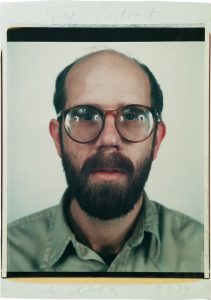
Andy Warhol is arguably the best-known artist of the second half of the 20th century. His works Double Elvis, Gold Marilyn and his Campbell’s Soup Cans are iconic. In 2011 a batch of drawings from the 1950s –the first decade Warhol spent in New York – was discovered among the works he left in his estate. In these early drawings Warhol establishes a precedent for his subsequent work. We come across: Portraits, Flowers, Guns, Car Crashes and Famous People. Through these drawings we see Warhol as a sensitive and ingenious draftsman.
He was particularly inspired by the blossoming magazine culture and its pictorial language. Extensive research by Daniel Blau has now identified the majority of the sources he used for his 1950s works. Warhol drew a large number of subjects from the world-famous LIFE magazine.
Selected Exhibitions
2019
“Andy Warhol-From A to B and Back Again”, SFMOMA, San Francisco, USA
“Contact Warhol: Photography Without End”, Cantor Arts Center, Stanford, USA
2019
“Andy Warhol: By Hand (Drawings 1950s-1980s)”, New York Academy of Art, New York, USA
2018
“Andy Warhol-From A to B and Back Again”, Whitney Museum of American Art, New York, USA
2015
“Andy Warhol: Campbell’s Soup Cans and Other Works 1953–1967”, The Museum of Modern Art, New York, USA
“YES!YES!YES! Warholmania”, Museum Brandhorst, Munich, Germany
“From Marilyn to Mao: Andy Warhol‘s Famous Faces”, Columbia Museum of Art Columbia, USA
“Andy Warhol and William Morris”, Modern Art Oxford, Oxford, England
“Pop To Popism”, Art Gallery of New South Wales, Sydney, Australia
“Transmitting Andy Warhol”, Tate Liverpool, Liverpool, England
2014
“Andy Warhol: Death and Disaster”, Kunstsammlungen Chemnitz, Chemnitz, Germany
“Audubon to Warhol: The Art of American Still Life”, Philadelphia Museum of Art,Philadelphia, USA
“From Photo to Print. Prints from Andy Warhol to Gerhard Richter”, Museum Folkwang, Essen, Germany
“SUPERPOP!”, Serlachius Museum Gosta, Mantta, Finland
“Andy Warhol: Life, Death and Beauty”, Beaux-arts Mons, Mons, Belgium
2013
Pinakothek der Moderne, Munich
2013
Teylers Museum, The Netherlands
2013
Louisiana Museum, Denmark
2009
Grand Palais, Paris
2000
Lousiana Museum, Humlebaek
1999
Large travelling exhibition at Kunsthalle Hamburg; the Andy Warhol Museum, Pittsburgh; International Center for Photography, New York
1993
Kunsthalle, Basel
1989
Travelling exhibition at Carnegie Museum of Art, Pittsburgh; University of Pennsylvania-Institute of Contemporary Art, Philadelphia; Serpentine Gallery, London; Newport Harbor Art Museum, Newport Beach; Fondation Cartier pour l’Art Contemporain, Jouy-en-Josas
1981
Museum of Modern Art, Vienna
1979
Whitney Museum of American Art, New York
1977
Museum Folkwang, Essen
1972
Walker Art Center, Minneapolis
1970
Travelling exhibition at Pasadena Art Museum; Museum of Contemporary Art, Chicago; Stedelijk Museum Eindhoven; Musée d’Art Moderne de la Ville, Paris; TheTate Gallery, London; Whitney Museum, NewYork
1966
The Velvet Underground is formed
1963
The Factory is founded
1962
First Campbell’s Soup and Coca Cola screen-print series, exhibited at Ferus Gallery, Los Angeles. Participation at The New Realists, Janis Gallery, New York
1956
Thirty Fifth Annual Art Director’s Club Award for his commercial shoe drawings
1952
Hugo Gallery: Fifteen Drawings based on the Writings of Truman Capote
Literature (Selection)
From Silverpoint to Silver Screen – Andy Warhol 1950s Drawings ed. Daniel Blau, published by Hirmer January 2013
Andy Warhol – Zeichnungen 1942-1987, ed. The Andy Warhol Museum Pittsburgh, 2005
Andy Warhol – Catalogue Rainsonné Vol. 2 (Paintings and Sculptures 1964-69), Georg Frei, Neil Printz, London, 2004
Andy Warhol – Catalogue Rainsonné Vol. 1 (Paintings and Sculptures 1961-63), Georg Frei, Neil Printz, London, 2002
Warhol Pre-Pop, Jesse Kornbluth, München, 1989
Andy Warhol – Das zeichnerische Werk 1942-1975, ed. by Württembergischer Kunstverein, Stuttgart, 1976
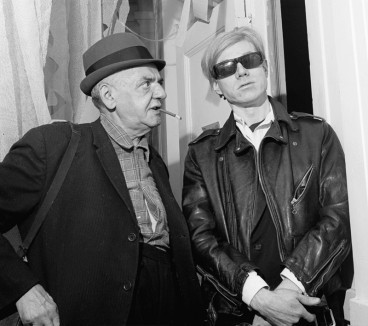
Stephanie von Reiswitz
Munich-born and very much immersed in the London universe, Stephanie von Reiswitz depicts surreal tales of past glories and tragedies, while rendering through her sombre colours and shapes an aesthetic reminiscent of the Weimar Republic.
Chris Bianchi
A self-invented Maltesian, Chris Bianchi’s somewhat surreal ideas are rendered in landscapes where new perspectives lead onto more and the viewer will find their mind pleasantly boggled.
Robert Rubbish
A unique Londoner and notorious Soho character, Robert Greene (a.k.a. Robert Rubbish), comprises half of the Victorian punk revivalist duo, the Rubbish Men, and shares generously a slice of his world through an adventurous synthesis of drawings and writing.
Bill Bragg
An illustrator with an appreciation for the deeper shades that a pencil can afford, this Englishman depicts fragmentary tales of mystery and conjures unlikely characters in a beautifully noir-esque style.
Neal Fox
Neal Fox was born 1981 in London, studied graphic design at Camberwell College of Art and illustration at the Royal College of Art in London. Fox is co-founder of LE GUN, an illustrative collective and their publication of the same name. He lives and works in London.
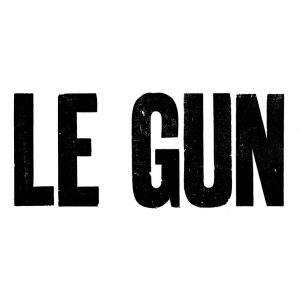





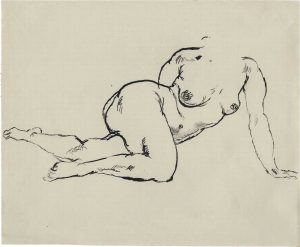


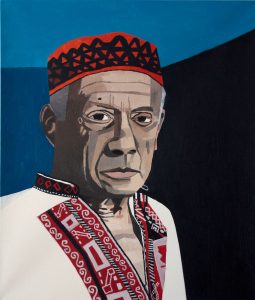



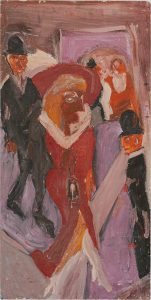
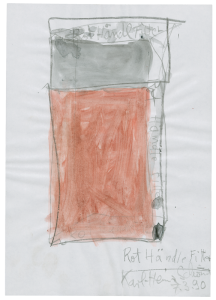
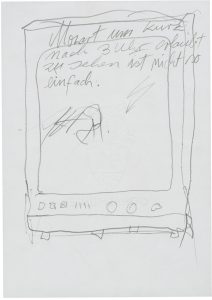
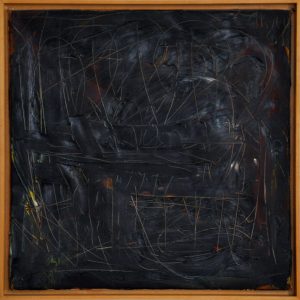


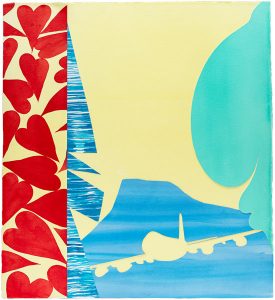
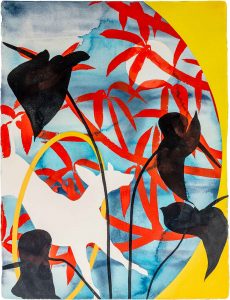
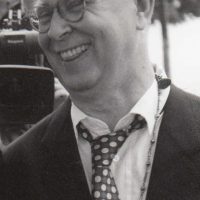
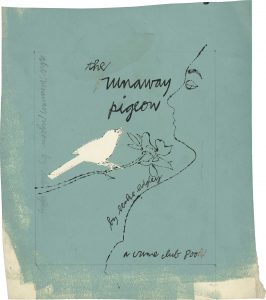



 +49 89 29 73 42
+49 89 29 73 42